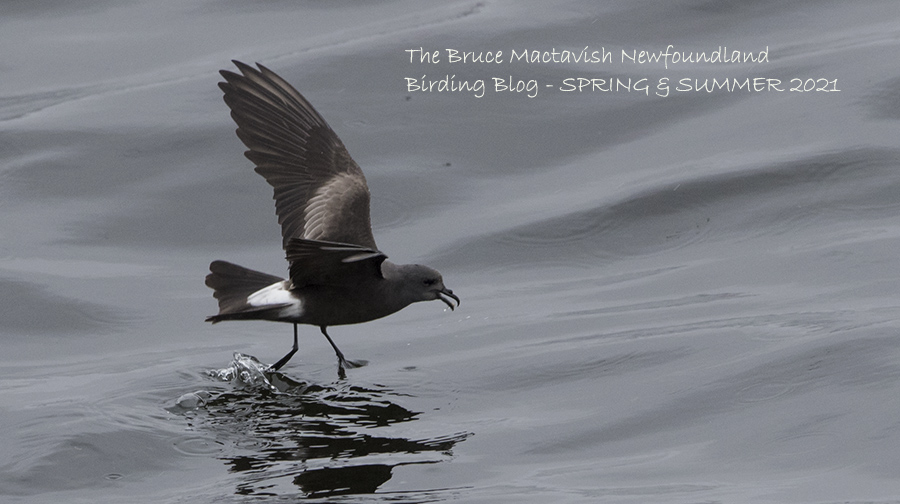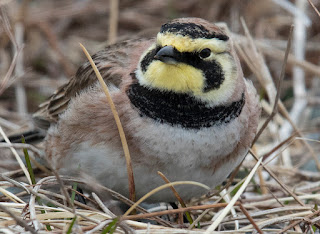Today Ken Knowles and I were checking out the gulls around the crab plant at Aquaforte, Avalon Peninsula, Newfoundland. We noticed a murre on the water. It is a little unusual to see a murre deep in the inlet like this in spring. And it was still in winter plumage. A casual look with binoculars showed the white hook curving up behind the eye meaning Common Murre. Not having many pictures of Common Murre in winter plumage I decided to drive the car toward it as I could a way to get fairly close. The photo session worked out in our favour but it was not a Common Murre. It had the definite bill shape of a Thick-billed Murre not to mention the white mark on bill. Interest peaked in securing pictures. I have never seen a TBMU like this. Below are pictures of the bird.
You can see why this bird at a distance is easy to pass off as a Common Murre in winter plumage because of the white hook sweeping up behind the eye. But the bill is all Thick-billed Murre. Short, slightly decurved upper mandible and white gap mark. The dullness of the gap mark usually means it is a one year old bird. Besides adults should be in breeding plumage at this time of year. The white lore is wrong for both species of murre. The white coming up behind the eye is like a COMU but that black line is thick and ragged unlike the thin black eye line of the winter COMU. The extent of black below the eye is right for a TBMU. There is no hint this bird has started to change toward a breeding-like plumage which even the sub adults do for summer. The throat and neck still immaculate white as in full winter plumage. It is not all unusual to see both species of murre in full winter plumage deep into spring. Don't see any reason to think hybrid. The shape of the bird is all TBMU, even the little 'dent' in the forehead characteristic of TBMU depending on pose is visible insome pictures.
The wide black area up the back of the neck is standard for TBMU. On winter COMU the white almost joins around the back of the neck.
THICK-BILLED MURRES in WINTER
A sampling of winter plumage Thick-billed Murres from the Avalon Peninsula, Newfoundland. Note the extensive black on the side of the face on all of these winter TBMUs. The birds with the strongest white gape marks and longer bills are probably adults. The shorter billed birds like the bird photographed today are probably sub-adult.
25 February 2009
24 March 2011
24 March 2011
7 March 2009
24 March 2011
24 March 2011
COMMON MURRES in WINTER
Two samples of winter Common Murres showing extensive white on face and thin black eye line.
28 February 2009
14 October 2011





























